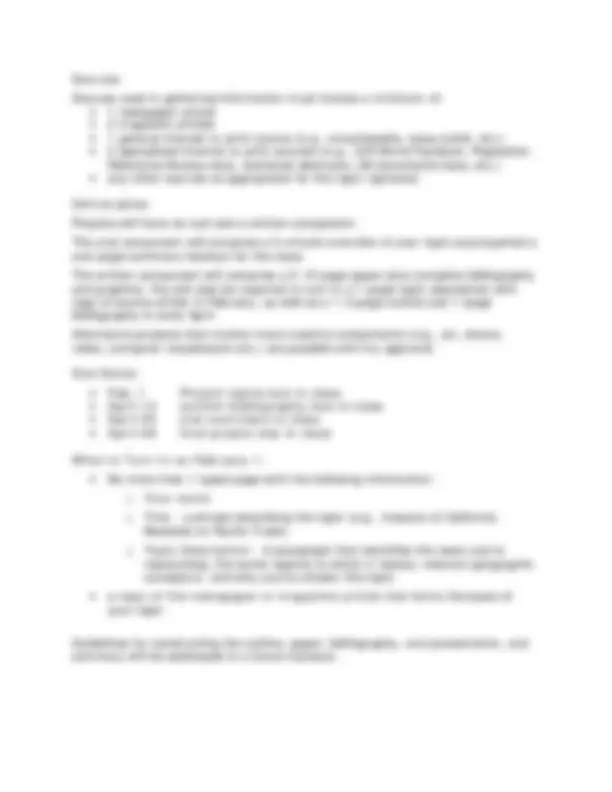



Study with the several resources on Docsity

Earn points by helping other students or get them with a premium plan


Prepare for your exams
Study with the several resources on Docsity

Earn points to download
Earn points by helping other students or get them with a premium plan
Community
Ask the community for help and clear up your study doubts
Discover the best universities in your country according to Docsity users
Free resources
Download our free guides on studying techniques, anxiety management strategies, and thesis advice from Docsity tutors
Material Type: Project; Class: World Regional Geography; Subject: Geography; University: Community College of Philadelphia; Term: Spring 2005;
Typology: Study Guides, Projects, Research
1 / 2

This page cannot be seen from the preview
Don't miss anything!


Geography 222 World Regional Geography Spring 2005 Section 001: TR 12:30-1: Current Events Project
One quarter of your grade will be based on a semester-long project that relates concepts covered in class to a topic of your choosing.
Topics
Topics must center on an issue that involves at least two different world regions. Choose your topic by finding a recent newspaper or magazine article dealing with an issue that interests you and takes place in at least one of the world regions defined in the textbook. If only one region is mentioned in the article, you must be able to relate the issue to another world region. You must also be able to relate the issue to one or more geography topics that are/will be covered in class and/or in your textbook.
Relevant concepts include (but aren't limited to): population patterns, migration, refugee issues, cultural differences, environmental impacts of cultural attitudes/differences, influences of territorial boundaries on identity, interaction, and exchange, consequences of colonialism, consequences of political/economic integration/supranationalism or fragmentation, agricultural systems, land use, environmental impacts of agriculture, processes and consequences of industrialization, globalization, economic development, gender roles, industrial location, environmental impacts of industrialization, urbanization, trade patterns, resource use, resource distribution, effects of natural hazards, settlement patterns, effects of human-induced changes to the environment.
Examples:
Sources
Sources used in gathering information must include a minimum of:
Deliverables
Projects will have an oral and a written component.
The oral component will comprise a 5-minute overview of your topic accompanied a one-page summary handout for the class.
The written component will comprise a 5-10 page paper plus complete bibliography and graphics. You will also be required to turn in a 1-page topic description with copy of source article in February, as well as a 1-2 page outline and 1-page bibliography in early April.
Alternative projects that involve move creative components (e.g., art, drama, video, computer visualization etc.) are possible with my approval.
Due Dates:
What to Turn In on February 1:
Guidelines for constructing the outline, paper, bibliography, oral presentation, and summary will be addressed in a future handout.